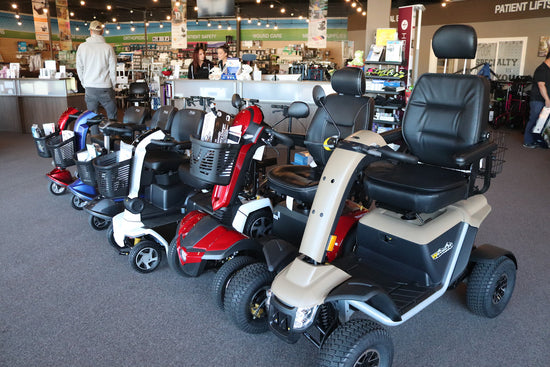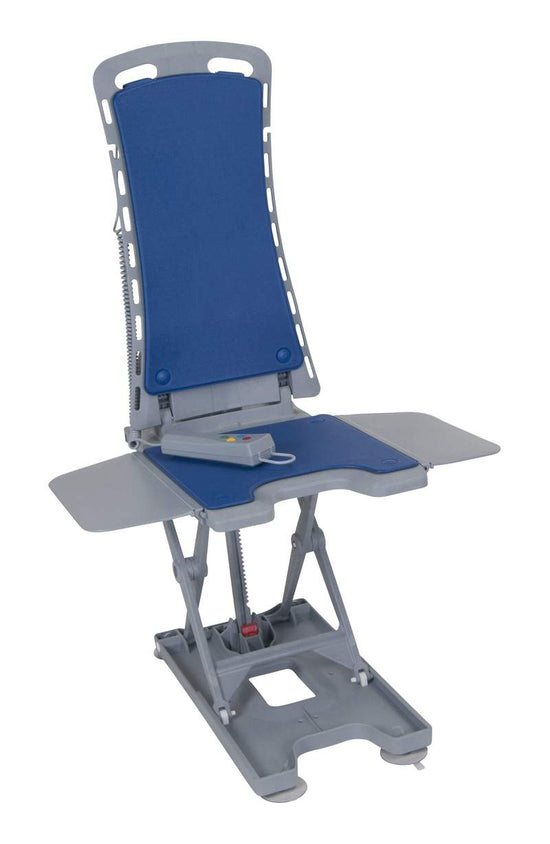In the world of healthcare, the importance of maintaining and cleaning medical supplies and equipment cannot be overstated. This is a critical aspect that ensures patient safety, prolongs the lifespan of medical equipment, and guarantees accurate diagnostic results.
In this comprehensive guide, we will delve into the best practices for the maintenance and cleaning of your medical supplies and equipment. We aim to provide you with valuable insights and practical tips that can be easily integrated into your routines, whether you're a healthcare provider, a medical facility administrator, or someone who relies on medical equipment at home.
Our focus is not just to inform but to empower you with knowledge that can make a significant difference in healthcare outcomes. So, let's get started on this journey towards better equipment care and management.
Understanding the Importance of Regular Maintenance and Cleaning of Medical Supplies and Equipment
Regular maintenance and cleaning of medical supplies and equipment is an integral part of healthcare delivery. It ensures the safety, reliability, and longevity of these critical tools. Here's why it's so important:
- Patient Safety: Dirty or malfunctioning medical equipment can pose serious risks to patient health. Regular cleaning and maintenance reduce the risk of infection, cross-contamination, and equipment-related injuries.
- Equipment Longevity: Proper maintenance can extend the life of expensive medical equipment, saving your healthcare facility significant costs in the long term.
- Compliance with Regulations: Healthcare facilities are subject to strict standards and regulations, including those related to equipment maintenance. Regular cleaning and maintenance ensure compliance with these standards, helping avoid penalties and reputational damage.
- Reliability: Regular maintenance ensures that equipment is always ready for use, reducing downtime and ensuring that patient care isn't disrupted.
- Accuracy: For diagnostic equipment, regular calibration and maintenance are key to providing accurate results. This leads to better patient outcomes and more effective treatment plans.
Regular maintenance and cleaning of medical supplies and equipment are non-negotiable aspects of healthcare provision. They are essential not only for patient safety and care quality but also for the operational efficiency of healthcare facilities. By implementing a robust maintenance and cleaning program, healthcare providers can ensure their equipment is always in optimal condition, and ready to provide the best care to patients.
Steps to Properly Clean and Disinfect Various Types of Medical Supplies
Cleaning and disinfection are two crucial steps in maintaining medical supplies and equipment. Here is a step-by-step guide to effectively clean and disinfect most types of medical supplies:
Step 1: Wear PPE (Personal Protective Equipment) Before starting the cleaning process, ensure you're wearing appropriate PPE, including gloves and eye protection, to avoid exposure to harmful pathogens and chemicals.
Step 2: Remove Visible Dirt The first step in cleaning is removing any visible dirt or organic matter from the equipment. Use a soft, damp cloth for this purpose.
Step 3: Cleaning Use a detergent or a cleaning solution suitable for the equipment material. Scrub all surfaces thoroughly, making sure to reach crevices and hidden areas. Rinse thoroughly with clean water to remove all traces of the detergent.
Step 4: Disinfection Apply a hospital-grade disinfectant on the equipment as per the manufacturer’s instructions. Ensure the disinfectant remains in contact with the surface for the recommended time to effectively kill pathogens.
Step 5: Rinsing & Drying After disinfection, rinse the equipment with sterile or high-quality water to remove residue. Dry the equipment thoroughly to prevent the growth of microorganisms.
Step 6: Inspection & Storage Inspect the equipment for damage or wear. Store cleaned and disinfected equipment in a dry, clean area until needed.
This process may vary depending on the specific type of medical supply or equipment. Always refer to the manufacturer's instructions for cleaning and disinfection guidelines.
Remember, proper cleaning and disinfection are fundamental to patient safety and infection control. By following these steps, healthcare providers can significantly reduce the risk of healthcare-associated infections and ensure that their medical supplies are safe and effective for patient care.
Best Practices for Maintaining Medical Equipment: From Ventilators to Ultrasound Machines
Proper maintenance of medical equipment, ranging from ventilators to ultrasound machines, is crucial for ensuring patient safety and optimal healthcare delivery. Here are some best practices to follow:
- Scheduled Inspections: Regularly inspect equipment for signs of wear and tear or malfunctioning parts. This allows early detection of issues that may compromise the equipment's performance.
- Preventive Maintenance: Adhere to the manufacturer's recommended preventive maintenance schedule. This can include routine cleaning, parts replacement, software updates, and calibration checks.
- Training: Ensure that all users are adequately trained on the correct use and maintenance of the equipment. Misuse can lead to equipment damage and compromise patient safety.
- Documentation: Keep detailed records of all maintenance activities, including inspections, repairs, and replacements. This helps track equipment history and can be useful for troubleshooting future issues.
- Use of Authorized Parts and Supplies: Always use parts and supplies authorized by the equipment manufacturer. Unauthorized components may not meet the necessary standards and could impair equipment function.
- Vendor Support: Maintain a good relationship with your equipment vendor. They can provide valuable support for maintenance, repairs, and troubleshooting.
- Safety Checks: Regularly test safety features, such as alarms and emergency shut-offs, to ensure they are functioning correctly.
By following these best practices, healthcare providers can maximize the lifespan and efficiency of their medical equipment, reduce downtime, and most importantly, ensure the highest level of patient care. Remember, the key to effective equipment maintenance is consistency and diligence in following the recommended procedures and schedules.
The Role of Sterilization in Medical Equipment Maintenance
Sterilization plays a pivotal role in the maintenance of medical equipment. It's a process that eliminates all forms of microbial life, including bacteria, viruses, fungi, and spores.
- Preventing Infections: Sterilization is crucial for preventing infections, particularly in settings where invasive procedures are performed or where patients have compromised immune systems. By sterilizing equipment, healthcare providers can significantly reduce the risk of healthcare-associated infections.
- Ensuring Patient Safety: Beyond infection control, sterilization also contributes to overall patient safety. Using sterile equipment helps prevent complications such as sepsis and tissue inflammation, which can occur when non-sterile equipment comes into contact with body tissues.
- Compliance with Regulations: Sterilization is often a regulatory requirement in healthcare settings. Regular sterilization practices ensure compliance with these regulations, thereby avoiding penalties and maintaining the facility's reputation.
- Enhancing Equipment Longevity: Sterilization also contributes to the longevity of medical equipment. By eliminating microorganisms, it prevents their growth on equipment surfaces, which can cause corrosion or other types of damage over time.
Tips for Ensuring the Longevity of Your Medical Equipment Through Effective Maintenance
Medical equipment is fundamental to healthcare delivery. Ensuring its longevity through effective maintenance is crucial for consistent, high-quality care. Here are some tips:
- Regular Inspections: Conduct routine inspections to identify any signs of wear and tear. Timely identification and repair can significantly enhance your equipment's lifespan.
- Adhere to Manufacturer’s Guidelines: Each piece of equipment comes with specific manufacturer's guidelines for cleaning and maintenance. Adherence to these instructions ensures optimal operation and longevity.
- Use High-Quality Supplies: The quality of supplies and replacement parts directly impacts the performance and lifespan of your equipment. Everything Medical in Redding, California, offers a comprehensive range of top-quality medical supplies that meet rigorous standards.
- Schedule Preventive Maintenance: Regular preventive maintenance as per the manufacturer's schedule can help prevent sudden breakdowns and increase the life of your equipment.
- Proper Storage: Correct storage of equipment when not in use is essential. Inappropriate conditions like extreme temperatures or humidity can damage equipment over time.
- Staff Training: Ensure your staff is well-trained in handling and maintaining equipment. This reduces the likelihood of damage due to incorrect usage.
- Regular Software Updates: For equipment with software components, regular updates often include enhancements that can extend the equipment's lifespan.
- Prompt Repairs: Address any signs of malfunction immediately. Delaying repairs can lead to more severe damage, shortening the equipment's life.
Implementing these tips can significantly enhance the longevity of your medical equipment. And remember, the success of your medical equipment maintenance isn't only about these steps, but also about where you source your equipment from.
Visit Everything Medical in Redding, California, for all your medical equipment needs. We offer top-quality products and services, ensuring you have reliable equipment that can stand the test of time. Our commitment to quality and service makes them a trusted partner in your equipment maintenance journey.




